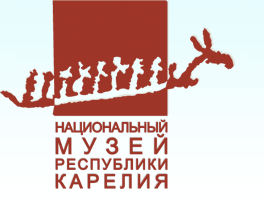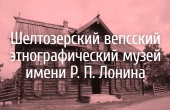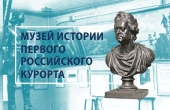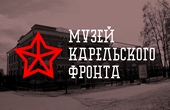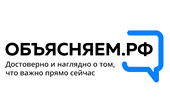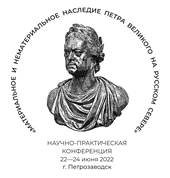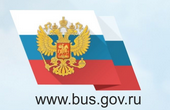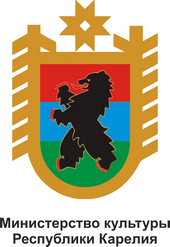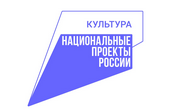Pirjo Uino,
PhD,
Chief Intendant,
National Board of Antiquities,
Helsinki, Finland
Christian Carpelan,
PhD hc,
Researcher,
Univ. of Helsinki
Helsinki, Finland
War always poses serious threat to cultural heritage such as museums and their collections, ancient monuments and other relics. Military conflicts can destroy and ravage locally or internationally interesting and important objects of cultural heritage. Looking back and focussing on our environment, we may ask what did take place in East-Karelia when the territory was occupied by Finnish troops? (The Finns used the name East-Karelia instead of Republic of Karelia.)
In the summer 1941 the Finnish forces rapidly recaptured the territory lost to the Soviet Union in the Moscow peace treaty (1940) and continued their advance towards the east. Petrozavodsk was taken 1 October 1941 and the occupation lasted to 27 June 1944. As the military operations continued the question soon arouse about the state and condition of the cultural relics as well as the protection they needed.
The Finnish military administration of East-Karelia employed, in November 1941, as bureau officer Eino Nikkilä, ethnologist at the National Museum of Finland, as keeper of the Karelian State Museum. Before that the Museum had already encountered robbery and Nikkilä strongly criticised the Military administration for failure to protect the Museum from the beginning. Nikkilä soon drew up instructions for the most urgent tasks in the preservation of cultural monuments and for the collection of objects significant as museum pieces. In February 1942 an order was issued on the protection of ancient monuments and cultural relics within the territory of the East-Karelian military administration. [5] Because it was possible that the fortification works along the River Svir’ would reveal ancient sites, archaeologist Helmer Salmo was commanded to follow the works. No relevant discoveries were done. As archaeological objects probably would be discovered in various earth works instructions were prepared for the collection, proper treatment and reporting of such finds. As a result of this the National Museum of Finland received a number of prehistoric objects.
A State Scientific Committee for East-Karelia had been founded in December 1941 for the preparation of scientific expeditions to the occupied territory. The task was to coordinate the research in cooperation with various scientific institutes and learned societies. A political goal was set: it was assumed that the research would produce evidence in support of the notion that the occupied territory belongs to Finland and of the legitimacy of the possession of the territory. [4, 5]
The Archaeological Commission (now National Board of Antiquities) and the Finnish Antiquarian Society prepared, for the summer 1943, an archaeological research programme including two expeditions. In June Dr Ella Kivikoski carried out excavations east of Lake Ladoga, at Vidlitsa (Vitele), where she studied two Viking Age burial mounds [1], assisted by Annikki Nisula. In July Professor Aarne Äyräpää studied Early Metal Age, Neolithic and Mesolithic sites at Tomitsa, Solomennoe (Solomanni), Shuya (Suoju), Suna (Suunu) and Medvezh’egorsk (Karhumäki), assisted by Ville Luho. The finds of both expeditions were incorporated into the collection of the National Museum of Finland. Furthermore, both archaeologists also studied the archaeological collection in the KGM. Later, plans were carefully prepared for archaeological expeditions in the summer 1944. These expeditions did not realise, however, as the military situation changed and the Finnish troops had to withdraw from East-Karelia. [4]
Historian Pentti Renvall, later on head of the Archives of Booty of East-Karelia, reported on the collections of the KGM in the beginning of November 1941. According to him, it seemed that the archaeological collection had been carefully evacuated before the arrival of the Finnish troops. However, when Nikkilä took a closer look at the Museum it turned out that there was, on the contrary, plenty of archaeological materials. The exhibition included for instance two reconstructed Viking Age burials, a piece of rock from Peri Nos with drawings and ceramics, and in storerooms lots of Neolithic artefacts and ceramics was found, in addition to kurgan finds.
As the KGM was a target of burglary and robbery Nikkilä, in his report of December 1941, suggested that the museum should be closed or guarded but the question of security did not proceed satisfactorily. On the third floor in the Museum was the library including literature on Prehistory. Soon the books were taken to a central stockroom at the University. The splitting of the valuable professional library annoyed Nikkilä because it would have been an important section of a future Central Museum of East-Karelia.
The catalogues and inventories of the KGM had been taken to the Archives of Booty. On the request of the Head of the Archaeological Commission C. A. Nordman they were sent as a loan to the National Museum of Finland, in September 1943. The delivery included 27 units, e.g. SPISOK № 1 and 2, which were meant to be copied. The documents were returned on 26 February 1944. To date, we only know of a copy of the catalogue SPISOK no. 1 (1937) including both Neolithic material and kurgan finds excavated by V.I. Ravdonikas. At the same time the kurgan material was sent to the National Museum where photographer E. Laakso took 36 photographs, the negatives of which were deposited in the archive. With the aid of SPISOK 1 Ella Kivikoski compiled a catalogue of the kurgan finds in Finnish illustrated with photographs. In addition, a Finnish photographic studio, Asemieskuvaamo, working in Petrozavodsk during the occupation photographed a reconstruction of the double burial of kurgan № 2 at Vidlitsa and a kurgan at Gittola.
Richard Indreko, archaeologist and refugee from Estonia, worked at the KGM early in 1944. His task was to compile a detailed and illustrated catalogue of the Stone Age material in addition to the Bronze Age and Initial Iron Age material from Tomitsa found in the Museum. Indreko produced the drawings and the text in Estonian in the Museum and probably, to save time, translated the text into German later, in Helsinki. It must have been pressing and stressing to work in a room with poor heating in the winter. However, he succeeded in keeping things in order and making careful drawings within a short period of time. He completed around 1500 sheets, most of them with drawings. [3]
According to what we have learned, the documents in question have not been found in Petrozavodsk. Where are they? In all probability, they should have ended up in the Soviet Union at the latest when the archival materials once transported to Finland were returned in 13 train wagons in the autumn 1944.
What then was the fate of the archaeological material of the KGM? In Petrozavodsk the belief has prevailed that archaeological collections ‒ for instance the kurgan material excavated by Ravdonikas in its entity ‒ were taken to Finland from where they would not have been returned [2]. It is alleged that the Finns looted the Museum completely and took everything with any value to Finland. This is not true. It is true that, in September 1943, numerous objects from the museum collections were transported to Finland for closer scrutiny (cataloguing, photography, microscopy, mineralogy etc.). Then this material was brought back to the Museum. The allegations that the Finns had destroyed the Museum and that the archaeological material taken to Finland remained there are illusions.
According to the catalogue of KGM, the National Museum of Karelia has in its possession a large number of objects coming from burial mounds excavated by Ravdonikas in the 1920s and 1930s. The Museum displays at this moment objects from kurgans whose materials were taken to Helsinki for photographing and cataloguing. According to the catalogue, the finds from the Karluha mound № 12, for instance, includes 22 items while the catalogue compiled by Ella Kivikoski gives 28 items. Both catalogues list objects from several of the same kurgans at Vidlitsa, Karluha and Krasnaya Zarya. Among other things, a semifinished shaft hole axe with the butt shaped as an animal’s head from Nemetskiy Navolok was taken to Helsinki for mineralogical study. It was returned to the KGM where it is on display today.
Clearly, this demonstrates that the Finns brought the finds taken to Helsinki for study back to the KGM. But, sadly, it is also true that the Museum was a target for hooligans and criminals who brought about disorder and destruction; in particular, the last ten days of the occupation were chaotic. Eino Nikkilä with colleagues deserve our grateful thoughts for what they achieved in very difficult conditions.
Archival sources and Literature
Archives in Helsinki: National Board of Antiquities, The National Archives; Finnish Literature Society / The Literature Archives
Archives in Petrozavodsk: National Archive of the Republic of Karelia, National Museum of the Republic of Karelia
1. Kivikoski E. Zur Herkunft der Karelier und ihrer Kultur // Acta Archaeologica, Vol. XV. København, 1944. S. 1–28.
2. Linevskij A.V. Stranicy minuvšego // Sever . 1987. № 4. 1987. Р. 62–91.
3. Nordqvist K. Richard Indreko’s archaeological activities in Finland and East Karelia (Russia) 1943–1944. Man, his time, artefacts and places: a collection of articles dedicated to Richard Indreko. Muinaisaja Teadus // Research into Ancient Times. 19. Tartu: University of Tartu. 2013. Р. 181–195.
4. Nordqvist K., Seitsonen O. Finnish Archaeological Activities in the Present-day Karelian Republic until 1944 // Fennoscandia archaeological. XXV: 2008. Р. 27–60. http://www.sarks.fi/fa/PDF/FA25_27.pdf
5. Pimiä T. Tähtäin idässä. Suomalainen sukukansojen tutkimus toisessa maailmansodassa // Jyväskylä Studies in Humanities 124. 2009. http://urn.fi/URN:ISBN:978-951-39-3686-0
